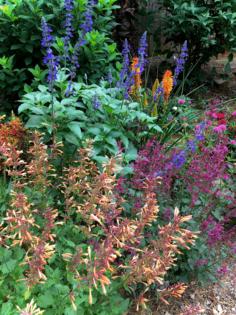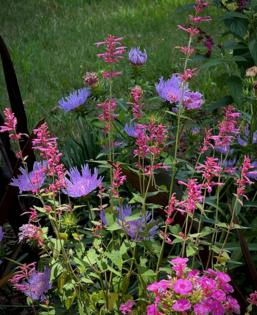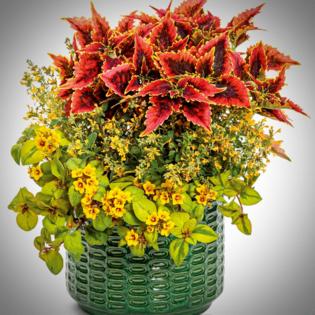On Gardening: Become the maestro of your garden with agastache
Published in Gardening News
Agastache, also known as anise hyssop and hummingbird mints, needs to be at the top of your list as we rocket toward planting season. Your trusty friend The Garden Guy is here to give you the long and the short (or to be more specific, the short and tall) of these ever-so-important pollinator plants. You will soon become the "maestro" of your garden.
Maestro is a new series making its debut this year in the Proven Winners lineup. Maestro Coral and Maestro Gold might be considered opposites from the standpoint of size when compared to their Meant to Bee agastache pair introduced in 2022. Both, however, will be pollinator champs if you give them a try.
The Maestro Coral and Maestro Gold plants defy everything you may have thought possible with agastache. Let me give you some examples. Meant to Bee Royal Raspberry is tall, reaching 28 to 32 inches, with Meant to Bee Queen Nectarine topping out at 30 to 36 inches. These are beautiful, swaying-in-the-breeze type of plants.
Perhaps you have tried Blue Boa, Blue Fortune or Black Adder; all top 3 feet, particularly in the South. So, we are used to agastache plants growing to a big size. With the Maestro Coral and Maestro Gold, we have a new dimension offering new garden possibilities. These are tough, stocky little plants that may reach 18 inches, but mine were considerably less. Like me, you will wonder how this little plant keeps on blooming.
This tight little habit offers mixed container partnerships and even the possibility of monoculture. I was struck by the beauty of a Proven Winners recipe that had ColorBlaze El Brighto coleus as the thriller plant with Maestro Gold as the filler and the much-underused Waikiki Sunset lysimachia as the spiller.
I felt lucky to get to trial them last year and even found myself wondering what to do. My favorite partnership consisted of planting them together, the gold and coral, along with some golden leafed carex grass.
I also believe that they, like the Meant to Bee, offer great opportunities to be combined with flowers like Totally Stoked Riptide Stoke’s asters, and Unplugged So Blue salvia. Remember you will be using the Maestro to the front of the border and Meant to Bee further back.
The Maestro agastache pair are recommended perennial in zones 8 and warmer, and annual everywhere, while the Meant to Bee Queen Nectarine and Royal Raspberry are perennial in zones 5-9. Both like plenty of sun and fertile well-drained soil. A winter bog is not your garden friend.
In this column thus far, I have mentioned several varieties of agastache and there are dozens more. Yet I must admit I can’t remember the last time I saw any for sale at the garden center. Is it because we still don’t know this plant? Or perhaps as perennials it is not yet in bloom, and we want instant gratification? The same questions could also be asked of the garden center.
As so many of us are eager to grow flowers for both beauty and pollinators, and garden centers want to provide those flowers, then let’s start asking now. The agastache is a game changer for bees, butterflies and hummingbirds and they are drop dead gorgeous too!
____
(Norman Winter, horticulturist, garden speaker and author of “Tough-as-Nails Flowers for the South” and “Captivating Combinations: Color and Style in the Garden.” Follow him on Facebook @NormanWinterTheGardenGuy.)
(NOTE TO EDITORS: Norman Winter receives complimentary plants to review from the companies he covers.)
©2025 Tribune Content Agency, LLC













Comments